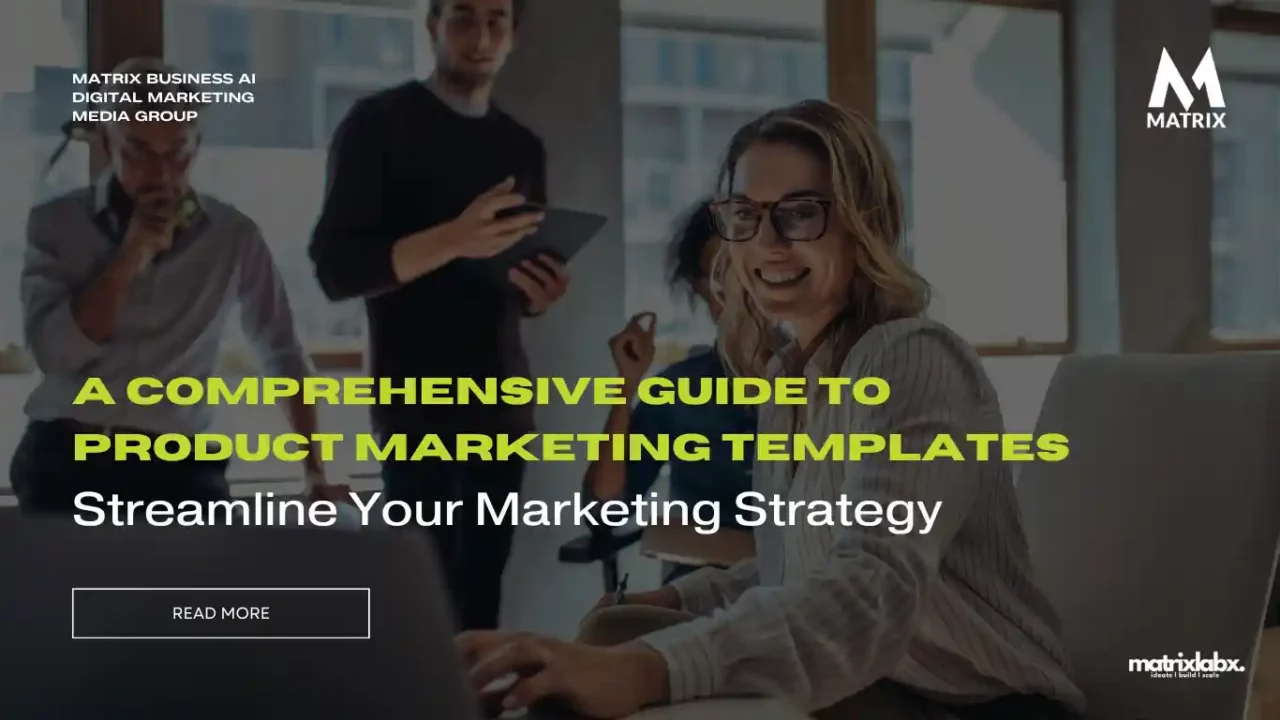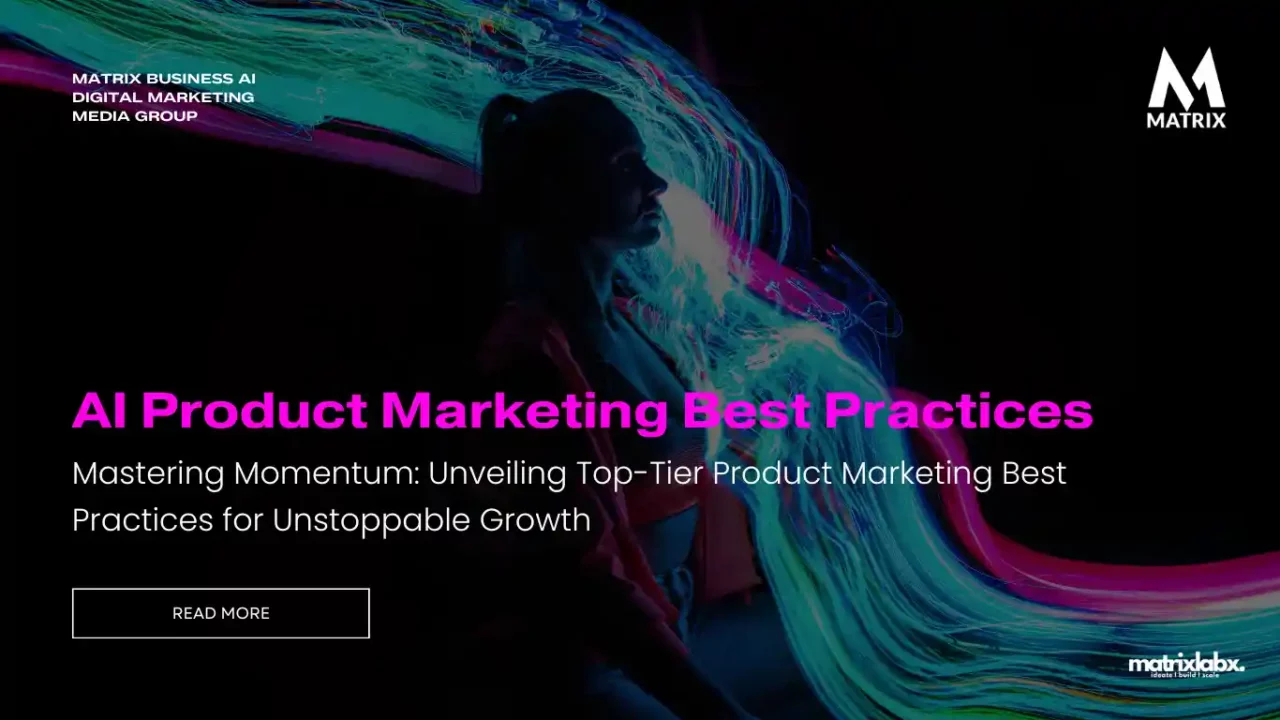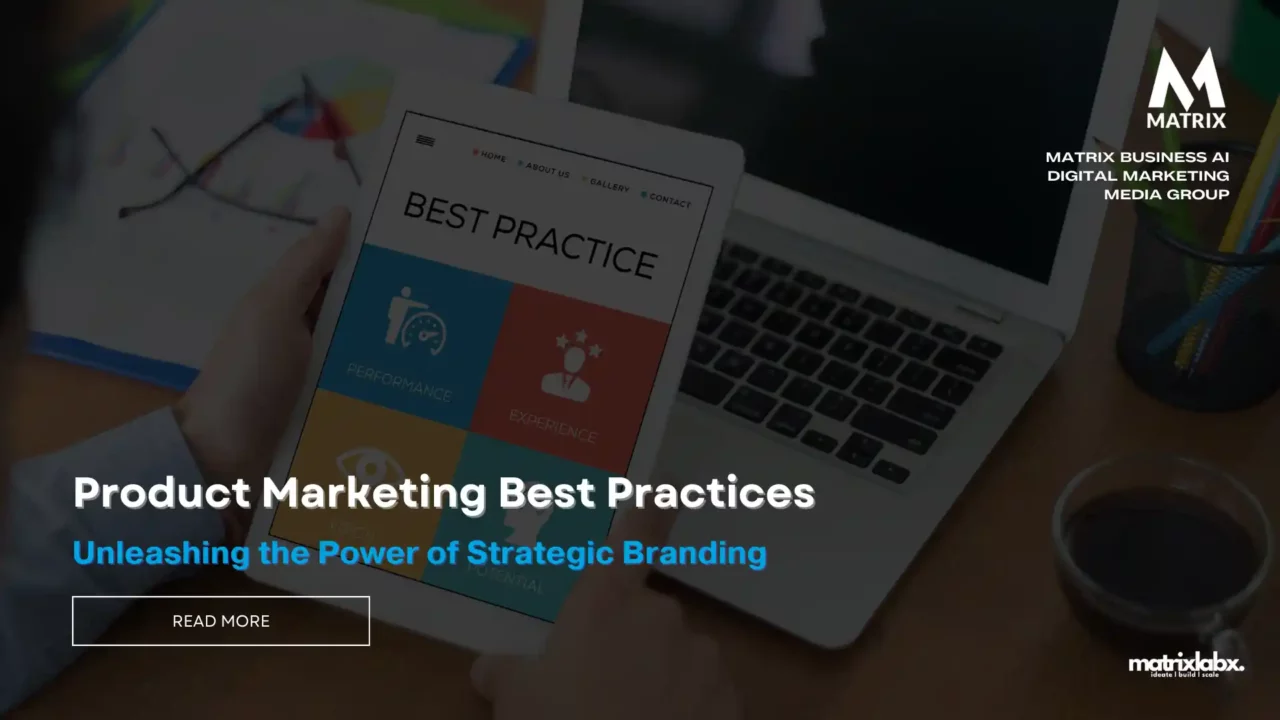A Comprehensive Guide to Product Marketing Templates: Streamline Your Marketing Strategy
Learn How to Use Product Marketing Templates: Streamline Your Marketing Strategy.
In the fast-paced world of product marketing, having a well-structured and organized approach is key to success. One powerful tool that can help you achieve this is a product marketing template.
These templates offer a framework and guidance for crafting effective marketing strategies, saving time and effort. In this article, we delve into product marketing templates, exploring their benefits, types, and tips to create impactful marketing campaigns that drive results.
I. Understanding the Importance of Product Marketing Templates
Grasping the Significance of Product Marketing Templates
In a bustling marketplace, the trajectory of a product’s success is heavily dictated by its marketing blueprint. This is where Product Marketing Templates come into play, acting as invaluable scaffolds that guide the articulation of a product’s narrative. These templates are not merely about promoting a product; they are about weaving a compelling story around it, ensuring its features and benefits are conveyed in a manner that resonates with the target audience.
The essence of Product Marketing Templates lies in their ability to standardize the marketing process, thus ensuring a coherent and consistent message. Moreover, they provide a structured framework, helping teams to meticulously plan, execute, and analyze marketing strategies. Using such templates facilitates a deeper understanding of market dynamics, customer preferences, and competitive landscapes.
Employing Product Marketing Templates can significantly truncate the time spent in strategizing and can potentially mitigate the risks associated with marketing missteps. It fosters a culture of informed decision-making, nurturing a conducive environment for iterative learning and continuous improvement.
In a realm where precision and clarity drive engagement, the importance of Product Marketing Templates is profound. They are the linchpins that hold the core marketing ethos together, ensuring that the product narrative is not only compelling but also congruent across various marketing channels.

II. Types of Product Marketing Templates
1. Buyer Persona Template
- Defining your target audience segments
- Gathering demographic and psychographic data
- Creating detailed customer profiles
2. Competitive Analysis Template
- Identifying key competitors
- Analyzing their strengths and weaknesses
- Evaluating market positioning
3. SWOT Analysis Template
- Assessing internal strengths and weaknesses
- Identifying external opportunities and threats
- Developing strategies based on analysis
4. Marketing Plan Template
A marketing plan template is a document that helps businesses to develop and implement a marketing strategy. It includes sections on the business’s goals, target market, marketing activities, and budget.
Here is an example of a marketing plan template:
Executive Summary
This section should provide a brief overview of the marketing plan, including the business’s goals, target market, and marketing strategy.
This section should describe the business’s mission and vision statements. The mission statement should describe the business’s purpose and what it hopes to achieve. The vision statement should describe the business’s long-term goals.
Here are some prompts that I, as an AI engineer, can provide to help a marketer with their mission and vision statement:
Mission statement prompts
- What are the core values of your company?
- What problem are you solving for your customers?
- What makes your company unique?
- What is your company’s purpose?
- How do you want your customers to feel when they interact with your brand?
Vision statement prompts
- What do you want your company to achieve in the next 5-10 years?
- What impact do you want to have on your industry or community?
- What kind of legacy do you want to leave behind?
- What kind of world do you want to create?
Prompts for both mission and vision statements
- How can you combine your mission and vision statements into a single, powerful statement that inspires your team and customers?
- How can you make your mission and vision statements clear, concise, and memorable?
- How can you ensure that your mission and vision statements are aligned with your company’s values and goals?
Here is an example of a prompt that I can provide to a marketer to help them create a mission statement:
Prompt:
Your company is a social media marketing agency that helps businesses of all sizes grow their online presence. Your core values are creativity, innovation, and customer service. Your mission is to help businesses connect with their customers and achieve their marketing goals.
Based on this information, please write a mission statement that is clear, concise, and inspiring.
Here is an example of a prompt that I can provide to a marketer to help them create a vision statement:
Prompt:
Your company is a fintech startup that is developing a new mobile payment platform. Your core values are security, convenience, and financial inclusion. Your mission is to make it easier and more affordable for people to send and receive money.
Based on this information, please write a vision statement that is clear, concise, and inspiring.
Situational Analysis
This section should analyze the business’s current situation, including its strengths, weaknesses, opportunities, and threats (SWOT analysis).
Target Market
This section should describe the business’s target market. The target market is the group of people who are most likely to be interested in the business’s products or services.
This section should describe the business’s marketing strategy. The marketing strategy should outline the steps that the business will take to achieve its marketing goals.
As a Chief Marketing Officer (CMO), here are some ways to use AI-driven strategies to create a global marketing strategy:
1. Gather and analyze customer data. AI can be used to gather and analyze large amounts of customer data from a variety of sources, such as social media, website analytics, and CRM systems. This data can then be used to identify customer trends and patterns, segment customers, and personalize marketing messages.
2. Automate marketing tasks. AI can be used to automate a variety of marketing tasks, such as email marketing, social media marketing, and content creation. This can free up marketers to focus on more strategic initiatives.
3. Personalize customer experiences. AI can be used to personalize the customer experience across all touchpoints, from the website to the call center. This can be done by using customer data to tailor marketing messages, product recommendations, and customer support.
4. Optimize marketing campaigns. AI can optimize marketing campaigns in real time based on customer data and performance metrics. This can help to improve the ROI of marketing campaigns.
5. Translate marketing content. AI can translate marketing content into multiple languages, making it easier to reach global audiences.
Here are some specific examples of how AI-driven strategies can be used to create a global marketing strategy:
- Use AI to identify and target key global markets. AI can be used to analyze customer data and market trends to identify key global markets for your products or services. Once you have identified these markets, you can tailor your marketing messages and strategies accordingly.
- Use AI to create personalized marketing campaigns for global audiences. AI can be used to create personalized marketing campaigns for global audiences by considering factors such as language, culture, and location. For example, you can use AI to translate your marketing materials into multiple languages and to target your ads to specific geographic regions.
- Use AI to track and measure the performance of your global marketing campaigns. AI can be used to track and measure the performance of your global marketing campaigns in real time. This data can then be used to optimize your campaigns and improve your results.
Overall, AI can be a powerful tool for creating and executing a global marketing strategy. By using AI to gather and analyze customer data, automate marketing tasks, personalize customer experiences, optimize marketing campaigns, and translate marketing content, you can reach global audiences more effectively and efficiently.
Here are some additional tips for using AI-driven strategies to create a global marketing strategy:
- Start small. Don’t try to implement too many AI-driven strategies all at once. Start with a few key areas where you think AI can make the biggest impact.
- Partner with AI experts. If you don’t have in-house AI expertise, partner with an AI agency or consultant to help you get started.
- Be transparent with your customers. Let your customers know how you are using AI to personalize their experiences and improve their interactions with your brand.
By following these tips, you can use AI to create a global marketing strategy that helps you achieve your business goals.
Marketing Channels
This section should identify the marketing channels the business will use to reach its target market. Marketing channels are the ways in which a business communicates with its target market, such as through advertising, public relations, and social media.
Marketing Budget
This section should outline the business’s marketing budget. The marketing budget should specify how much money the business will spend on each marketing activity.
Timeline
This section should include a timeline for implementing the marketing plan. The timeline should specify when each marketing activity will be completed.
Metrics for Success
This section should identify the metrics the business will use to measure the success of its marketing plan. Common metrics for success include website traffic, lead generation, and sales.
Conclusion
This section should summarize the key points of the marketing plan.
Appendix
This section can include additional information, such as market research data, competitive analysis, and marketing materials.
A marketing plan template can be a valuable tool for businesses of all sizes. By developing and implementing a marketing plan, businesses can increase their chances of success.
5. Content Calendar Template
- Planning content creation and distribution
- Scheduling blog posts, social media content, and email campaigns
- Ensuring consistent messaging and timely delivery
6. Email Marketing Template
- Designing effective email campaigns
- Crafting compelling subject lines and copy
- Including persuasive CTAs and personalization
7. Landing Page Template
- Optimizing landing page design
- Creating persuasive copy and visuals
- Implementing lead capture forms and tracking pixels
8. Social Media Content Template
- Defining content themes and goals
- Planning posts for different social media platforms
- Incorporating engaging visuals and hashtags
9. Ad Campaign Template
- Setting campaign objectives and target audience
- Defining ad formats and placements
- Allocating budget and tracking metrics
III. Tips for Creating Effective Product Marketing Templates
- Tailor Templates to Your Specific Needs
- Keep Templates Updated and Relevant
- Ensure Visual Appeal and User-Friendliness
- Encourage Collaboration and Input
- Test and Iterate for Continuous Improvement
Conclusion
Product marketing templates are invaluable resources for streamlining your marketing efforts, ensuring consistency, and maximizing productivity. By utilizing a variety of templates, such as buyer personas, competitive analysis, marketing plans, content calendars, and more, you can effectively plan and execute your marketing strategies.
Customize templates to suit your requirements, keep them updated, and encourage collaboration for optimal results. With these templates, you are well-equipped to drive successful marketing campaigns and propel your products to new heights.





